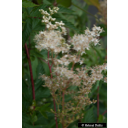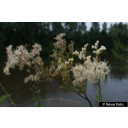Useful information about the taxon (species, subspecies, variety...)
Filipendula ulmaria (L.) Maxim. 1879
Rosaceae (APG IV)
Taxon concept: Schmeil-Fitschen 2019
Filipendula ulmaria (L.) Maxim. - Accepted: Filipendula ulmaria (L.) Maxim. bei Zander 2008; Familie: Rosaceae (Zander 2008)
Filipendula ulmaria (L.) Maxim. - Accepted: Filipendula ulmaria (L.) Maxim. bei The Plant List (2010); Familie: Rosaceae (APG III)
Filipendula ulmaria (L.) Maxim. - Accepted: Filipendula ulmaria (L.) Maxim. bei The Plant List (2014), version 1.1; Familie: Rosaceae (APG III)
Filipendula ulmaria (L.) Maxim. - Accepted: Filipendula ulmaria (L.) Maxim. bei The Plant List (2014), version 1.1; Familie: Rosaceae (APG IV)
Filipendula ulmaria (L.) Maxim. - Accepted: Filipendula ulmaria (L.) Maxim. bei The Plant List (2010); Familie: Rosaceae (APG IV)
Filipendula ulmaria (L.) Maxim. - Accepted: Filipendula ulmaria (L.) Maxim. bei BfN Checklist Flora DE; Familie: Rosaceae (APG IV)
Filipendula ulmaria (L.) Maxim. - Accepted: Filipendula ulmaria (L.) Maxim. bei The Plant List (2010); Familie: Rosaceae (APG III)
Filipendula ulmaria (L.) Maxim. - Accepted: Filipendula ulmaria (L.) Maxim. bei The Plant List (2014), version 1.1; Familie: Rosaceae (APG III)
Filipendula ulmaria (L.) Maxim. - Accepted: Filipendula ulmaria (L.) Maxim. bei The Plant List (2014), version 1.1; Familie: Rosaceae (APG IV)
Filipendula ulmaria (L.) Maxim. - Accepted: Filipendula ulmaria (L.) Maxim. bei The Plant List (2010); Familie: Rosaceae (APG IV)
Filipendula ulmaria (L.) Maxim. - Accepted: Filipendula ulmaria (L.) Maxim. bei BfN Checklist Flora DE; Familie: Rosaceae (APG IV)
- Life form
- herbaceous, terrestrial, perennial
Breunig, T. et al. (2021): Rote Liste der Farn- und Blütenpflanzen Baden-Württembergs.;
Bundesamt für Naturschutz (BfN) (1999-2001 and ongoing): Floraweb - Daten und Informationen zu Wildpflanzen und zur Vegetation Deutschlands. www.floraweb.de.;
Erhardt, W., Götz, E., Bödeker, N. & Seybold, S. (2008): Der große Zander. Enzyklopädie der Pflanzennamen. Band 2. Arten und Sorten. Eugen Ulmer KG, Stuttgart (Hohenheim), 18. Aufl., 2103 S.;
Jäger, E. J. et al. (2007): Rothmaler - Exkursionsflora von Deutschland. Band 5: Krautige Zier- und Nutzpflanzen. Spektrum Akademischer Verlag, Aufl. 31.10.2007: 880.;
Maurizio, Anna et al. (1982): Nektar und Pollen - die wichtigsten Nahrungsquellen der Honigbiene. 4. Ehrenwirth, München, 3, überabeitete Auflage;
Metzing, D. et al. (2018): Rote Liste und Gesamtartenliste der Farn- und Blütenpflanzen (Trachaeophyta) Deutschlands .;
Oberdorfer, E. (2001): Pflanzensoziologische Exkursionsflora. Für Deutschland und angrenzende Gebiete. Eugen Ulmer Verlag, Stuttgart, 8., stark überarb. u. erg. Aufl, 1056 S. 978-3-8001-3131-0.;
Pritsch, Günter et al. (2007): 200 Trachtpflanzen erkennen und bewerten.. Kosmos, Stuttgart;
Schick, B. & Spürgin, A. (1997): Die Bienenweide. Eugen Ulmer Verlag, Stuttgart, Auflage: 4., völlig neubearb. u. erw. A., 216 S. 978-3800174188.;
The International Plant Names Index (2009). Published on the Internet http://www.ipni.org; Courtesy to IPNI, 2009. Exported from IPNI at date: 2009-09-22 20:17:51;
Bundesamt für Naturschutz (BfN) (1999-2001 and ongoing): Floraweb - Daten und Informationen zu Wildpflanzen und zur Vegetation Deutschlands. www.floraweb.de.;
Erhardt, W., Götz, E., Bödeker, N. & Seybold, S. (2008): Der große Zander. Enzyklopädie der Pflanzennamen. Band 2. Arten und Sorten. Eugen Ulmer KG, Stuttgart (Hohenheim), 18. Aufl., 2103 S.;
Jäger, E. J. et al. (2007): Rothmaler - Exkursionsflora von Deutschland. Band 5: Krautige Zier- und Nutzpflanzen. Spektrum Akademischer Verlag, Aufl. 31.10.2007: 880.;
Maurizio, Anna et al. (1982): Nektar und Pollen - die wichtigsten Nahrungsquellen der Honigbiene. 4. Ehrenwirth, München, 3, überabeitete Auflage;
Metzing, D. et al. (2018): Rote Liste und Gesamtartenliste der Farn- und Blütenpflanzen (Trachaeophyta) Deutschlands .;
Oberdorfer, E. (2001): Pflanzensoziologische Exkursionsflora. Für Deutschland und angrenzende Gebiete. Eugen Ulmer Verlag, Stuttgart, 8., stark überarb. u. erg. Aufl, 1056 S. 978-3-8001-3131-0.;
Pritsch, Günter et al. (2007): 200 Trachtpflanzen erkennen und bewerten.. Kosmos, Stuttgart;
Schick, B. & Spürgin, A. (1997): Die Bienenweide. Eugen Ulmer Verlag, Stuttgart, Auflage: 4., völlig neubearb. u. erw. A., 216 S. 978-3800174188.;
The International Plant Names Index (2009). Published on the Internet http://www.ipni.org; Courtesy to IPNI, 2009. Exported from IPNI at date: 2009-09-22 20:17:51;
| Sex | Standort | Accession number | Planting year | Donation | IPEN | Lat. | Long. |
|---|
Last update:
Taxonomic update: Helmut Dalitz on: 10.5.2021Update of the description: Helmut Dalitz; latest by: Helmut Dalitz on: 25.6.2012
In the list below you will find the geographic coordinates of many woody plants in the garden. In these cases the points are marked in the map.
If no coordinates are listed, the coordinate of the point in the map marks the middle coordinate of the section.


